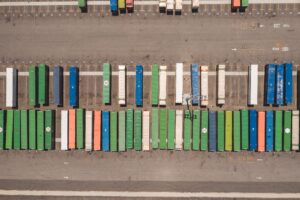Customs duties are fees charged on goods crossing international borders. Customs duties are levied by special authorities and bodies created by local governments and aim to protect local industries, economies and businesses. There may be different customs duties related to different products as well as different countries of origin.
What Is The Difference Between Tax and Customs Duty?
Although the two terms are used interchangeably, technically speaking, there is a difference between tax and duty:
- Tax is a type of tax imposed on imported goods. The purpose of customs duties is primarily to protect local economies;
- Custom duties are charged on all goods sold in the country, including imported ones. The main purpose of taxes is to generate revenue for the state.
The main difference is that customs duties are taxes that apply specifically to imports, while taxes apply to everything, including imports. For the importer, both are fees charged to their shipment (typically to the relevant customs authorities) and both contribute to the total cost of downloading. Import compliance and classification solutions can help importers determine what taxes and duties apply to their products.
What Is The Difference Between Import Tariff and Customs Duty?
A tariff is a specific type of tax applied to certain imports.
- Custom tax rates may vary depending on the goods in question, but customs duty is a charge applied to most (if not all) imported goods.
- A tariff is an additional fee charged to certain goods entering the country, typically to deter imports of these goods (usually to provide greater protection to certain local industries).
Most imports have taxes associated with them. Additional tariffs may apply depending on several goods, countries or jurisdictions. Accurately classifying imports using classification systems such as HS and HTS helps importers determine what taxes and tariffs apply to shipments.

What Is Value Added Tax (VAT)?
Value added tax is a type of sales tax levied on all goods and services sold by the government in a country. It is taken technically for every stage of production, distribution and sale to the end customer. When importing into VAT-applicable countries, VAT is a fraction of the total fees payable on the imported shipment and contributes to the total download cost.
What Is Import Tax Refund?
Importers can often seek reimbursement for excess taxes paid, just as individuals may be eligible for reimbursement for income taxes where taxes paid by individuals (through deductions from paychecks) are more than they are required to pay. This is known as import duty recovery and can be used with warnings and restrictions by importers who can prove they overpaid.
What Is A Tax Disadvantage?
A duty refund is a form of import duty recovery that is collected exclusively for goods in transit through the country. In other words, a tax refund is a refund of import duties paid on goods re-exported out of the country (or manufactured goods that were originally imported and levied on imports).
What Is Compensatory Tax?
Compensatory taxes are special taxes and tariffs imposed on countries of origin where governments provide assistance and assistance to domestic industries in the form of subsidies and/or tax exemptions. This assistance can then enable these industries to export their products at lower prices, potentially damaging local industries for the importing country. Compensatory taxes are usually imposed by the International Trade Commission after an investigation.

How Do Customs Officials Calculate Customs Duties and Taxes?
Customs officers use the information on your commercial invoice and other related documents to calculate customs duties and taxes. Therefore, it is very important that you include information such as the HS Code and the exact value of the goods on your commercial invoices. Note that if you leave the information incomplete, customs will calculate taxes and duties on your cargo, which may result in you overpaying.
How Do You Calculate Your Import Taxes?
To get started, calculate the customs duty percentage rate on the goods you ship. This rate varies according to the country of destination. You can calculate customs duties manually, and some calculators are available online for free. To find it, go to the government website of your destination country’s customs or trade tariff page. You can usually find tax rates using an HS code or a product description. For example, a women’s t-shirt entering the UK from the USA has a customs duty percentage or 12% trade tariff.
After Finding The Rate, You Can Calculate The Customs Duty On Your Cargo
To do this, add the value of the goods, freight charges, insurance and other costs, and then multiply by the tax rate. The result is the amount of tax you have to pay at customs for your cargo. Some countries have various procedures for calculating tariffs, so double-check your government’s website or your carrier.
How Do Customs Duties and Taxes Affect Your Shipment?
Customs duties and taxes can have a significant impact on total shipping costs, so it’s important to understand how officials calculate them and who is responsible for payment. This can save you and your buyer valuable time and effort. Taxes and duties are imposed to protect national income and protect local industry. Almost all shipments crossing international borders are subject to customs duty and tax assessment by customs authorities based on the information provided on the commercial invoice and other relevant documents. Authorities must be paid before shipments clear customs. Customs fees depend on:
- Product value
- Trade agreements (if any)
- Country of origin
- Product description and end use
- The product’s Harmonized System (HS) code
- Country-specific regulations
What Is The Difference Between Value Added Tax (VAT) and Goods and Services Tax (GST)?
In most countries there is a national tax assessed on the value of goods and services. Although the terminology used in different countries may vary, the principle is the same. In some countries such as Canada, USA, Singapore, Australia and New Zealand, this tax is known as Goods and Services Tax or GST.

Value Added Tax (VAT) exists in the United Kingdom and the European Union (EU) Businesses registered and fully taxed on VAT do not cover the final cost of VAT as it is a tax on consumer spending. It may also be known as IVA, TVA, BTW and AFA in different countries but the principle is the same.


 Value Added Tax (VAT) exists in the United Kingdom and the European Union (EU) Businesses registered and fully taxed on VAT do not cover the final cost of VAT as it is a tax on consumer spending. It may also be known as IVA, TVA, BTW and AFA in different countries but the principle is the same.
Value Added Tax (VAT) exists in the United Kingdom and the European Union (EU) Businesses registered and fully taxed on VAT do not cover the final cost of VAT as it is a tax on consumer spending. It may also be known as IVA, TVA, BTW and AFA in different countries but the principle is the same. 


